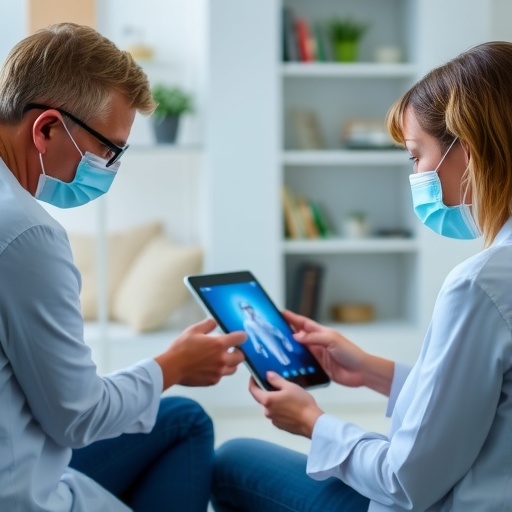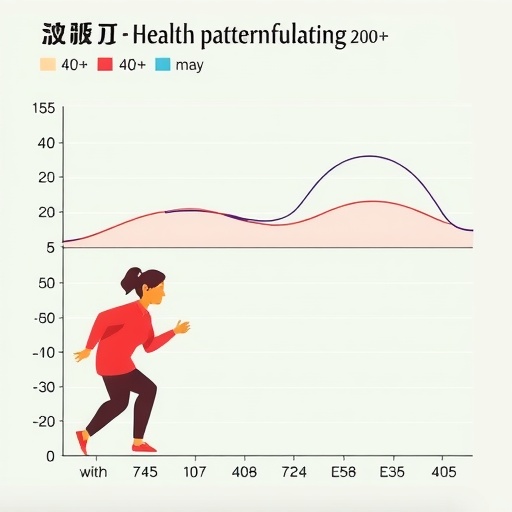In a groundbreaking study published in BMC Health Services Research, researchers have explored the transformative potential of rapid-access telemedicine for individuals recently released from incarceration. This underserved population often faces significant barriers to accessing health care, particularly for addiction treatment, which can exacerbate their vulnerabilities. The study, titled “Mind the gap,” systematically evaluates how telemedicine can bridge this gap in care and enhance the overall value of health services provided.
As the opioid crisis rages on and substance abuse remains a pressing public health challenge, traditional models of addiction treatment have struggled to keep pace. Individuals recently released from prison often grapple with heightened addiction rates, compounded by a lack of resources or support mechanisms. The approach taken in this study leverages modern technology to provide timely and effective care, potentially revolutionizing the way addiction treatment is administered to this population.
Key to the research was the implementation of a rapid-access telemedicine program designed specifically for recently incarcerated individuals. The program allows these individuals to connect with healthcare providers remotely, thereby eliminating the geographic and logistical barriers that often impede access to care. By employing telemedicine, the study aims to deliver evidence-based addiction treatment protocols directly to patients, fostering better engagement and adherence to treatment plans.
The study focused on a diverse cohort, considering various factors such as prior incarceration history, substance use patterns, and socio-economic status. Researchers employed a rich array of data collection methods, including surveys and interviews, to assess the initial reception of telemedicine among participants. Surprisingly, the findings indicated a strong preference for telehealth services, with many individuals citing the convenience and privacy offered by remote consultations.
Additionally, the quality improvement aspect of the study cannot be understated. By analyzing treatment outcomes and patient satisfaction metrics, the research team was able to highlight key areas where traditional models of care fell short. This rigorous assessment not only illustrates the efficacy of rapid-access telemedicine but also serves as a catalyst for broader systemic changes in how addiction treatment is approached within the healthcare landscape.
The implications of this study extend far beyond the individual participants involved. As health systems grapple with increasing demand for addiction services, innovative solutions like telemedicine offer a pathway to scale treatment efforts rapidly and efficiently. The results point towards a significant rethinking of care delivery, especially in light of ongoing healthcare inequities that disproportionately affect marginalized communities.
Moreover, as behavioral health increasingly intersects with public health policies, findings from this study could inform legislative efforts aimed at expanding telehealth access. Policymakers and advocates are encouraged to take note of the successful elements of the rapid-access model, which could be adapted and implemented in various contexts. By addressing the unique challenges faced by recently incarcerated individuals, such initiatives could pave the way for more equitable healthcare solutions nationwide.
Telemedicine’s capacity to provide immediate support is crucial in addiction treatment, as timely intervention can often be the deciding factor in recovery success. To that end, the researchers emphasize the need for continuous monitoring and evaluation of such programs to ensure they meet the nuanced needs of this population. Future studies may augment their findings by exploring the long-term impacts of telemedicine on relapse rates and overall health outcomes.
The integration of telehealth into addiction services does not come without its challenges, particularly concerning technology access and digital literacy among patients. Researchers acknowledge these barriers and propose targeted education and outreach efforts to enhance engagement. By promoting familiarity with technology, healthcare providers can foster a more inclusive climate that bolsters participation in telehealth initiatives.
In conclusion, “Mind the gap” not only sheds light on an innovative approach to addiction treatment but also acts as a clarion call to healthcare professionals, policymakers, and community organizations. As the cycles of incarceration and addiction continue to perpetuate themselves, adopting solutions that are both adaptable and patient-centered is imperative. The role of telemedicine in this context is poised to expand, potentially shifting the paradigm of care for many who have long been overlooked in traditional healthcare settings.
In summary, this study underscores the urgency of rethinking addiction treatment paradigms in light of contemporary challenges. Rapid-access telemedicine is not simply a stopgap measure; it represents a forward-thinking strategy that aligns with the principles of equity, accessibility, and quality in healthcare. As we move forward, embracing such innovations will be vital to addressing the alarming rates of addiction within this vulnerable population and ultimately transforming their lives for the better.
Subject of Research: Telemedicine addiction treatment for recently incarcerated individuals
Article Title: Mind the gap: a quality improvement study to determine health care value of rapid-access telemedicine addiction treatment in recently incarcerated individuals.
Article References:
Golden, J., Venkat, D., Yin, Y. et al. Mind the gap: a quality improvement study to determine health care value of rapid-access telemedicine addiction treatment in recently incarcerated individuals.
BMC Health Serv Res 25, 1351 (2025). https://doi.org/10.1186/s12913-025-13520-z
Image Credits: AI Generated
DOI: 10.1186/s12913-025-13520-z
Keywords: Telemedicine, addiction treatment, recently incarcerated individuals, healthcare accessibility, public health, quality improvement.
Tags: addiction treatment for recently incarcerated individualsbridging gaps in addiction careenhancing healthcare for underserved populationsevidence-based treatment protocolshealthcare delivery innovationimproving patient engagement in telemedicineopioid crisis and substance abuseovercoming barriers to healthcare accessrapid-access telemedicine programstechnology in addiction recoverytelehealth solutions for vulnerable populationstelemedicine for addiction treatment





